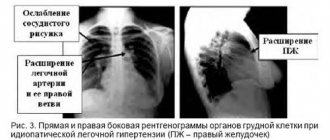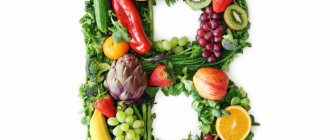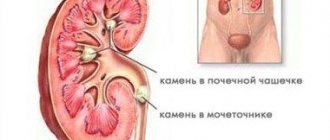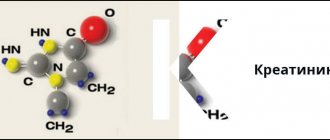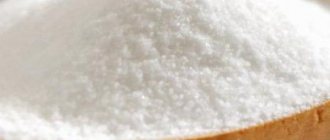Why is blood thinned?
Bleeding disorders can occur at any age. First of all, this problem concerns everyone over 50 years of age. Thick blood puts additional stress on the heart. This is due to the fact that it is more difficult to pump thick liquid through a huge circulatory system; more power is required, which the heart must produce. At the same time, the pulse becomes faster and the tremors become stronger. During such work, the heart muscle wears out faster, the valves fail, and the tightness of the atria is compromised.
Another danger of thick blood is the formation of blood clots. Thrombi are individual clots that form as a result of platelets sticking to each other. The resulting blood clots attach to the walls of blood vessels and interfere with blood flow. But the worst thing for a person’s life is a detached blood clot. As it rushes through the circulatory system, the current carries it to the lungs and then to the heart. By blocking the lumen of an artery in one of the organs, a blood clot causes an ischemic stroke, which often leads to death.
In addition, thick blood cannot supply organs and tissues with nutrients in a timely manner, which is why the body suffers from mild forms of hypoxia. The thicker the biological fluid, the more difficult it is for it to rise from the lower extremities to the heart. As a result, blood stagnation in the veins, thrombosis and varicose veins appears.
Can there be an overdose?
Against the backdrop of the question of vitamin C deficiency, many may have a question about the opposite situation: is there a risk of hypervitaminosis? “Hypervitaminosis is not usually described because excess vitamin C is excreted in the urine. However, now it is not uncommon for people to abuse vitamin C, consuming it in the form of dietary supplements or pharmaceutical preparations. This only leads to the development of toxic-allergic reactions and impaired kidney function. It is worth noting that such problems do not arise with natural consumption of vitamin C with food,” says Evgenia Parshina. This means that ascorbic acid is extremely important for the human body, but it should only be supplied to it through natural products.
Thinning agents
The most affordable ones today are drugs based on acetylsalicylic acid, better known as Aspirin. Such medications are common in pharmacies and cost little. Due to the fact that acetylsalicylic acid carries certain risks for the hematopoietic system and can cause gastric bleeding or ulcers, medicine has actively begun to work on the creation of drugs free from aspirin. Such dosage forms are available in pharmacies today. This group of drugs is divided into two subgroups
- antiplatelet agents that prevent blood cells from sticking together.
- anticoagulants, which prevent the formation of fibrin clots during coagulation.
Such drugs can be prescribed not only to older people to thin the blood, but also to pregnant women, in order to ensure the best blood flow between mother and fetus. A course of taking medications from this group saturates the blood with oxygen, which is very important for the developing fetus.
What food thins it out?
But to quickly thin the blood, nutritionists recommend eating the following effective foods that reduce blood viscosity and prevent the formation of blood clots:
- Sour berries . Almost all berries contain ascorbic acid (vitamin C), which accelerates the process of breakdown of lipid compounds in the blood plasma. Lemon and many citrus fruits have a similar effect.
- Garlic. It contains a wide range of phytoncides and organic acids, which also stimulate the breakdown of cholesterol. At the same time, essential oils help the body quickly remove all kinds of toxins (in particular, sodium compounds).
- Mulberry. Rich in vitamins B1, E (an antioxidant), which resist the oxidation of red blood cells and their adhesion. At the same time, you need to eat only 15–20 grams of mulberry daily to normalize the hematocrit number.
- Olive oil. It contains virtually no low-density cholesterol, but a large amount of omega-3 acids. All this together normalizes lipid metabolism.
- Beet. Due to the large amount of fiber it contains, it retains fluid in the large intestine. This increases the concentration of potassium, and decreases sodium (which increases the alkalinity of the blood).
- Ginger. According to scientists, it contains over 20 essential oils and organic acids. They, in turn, help get rid of toxins and reduce cholesterol levels. The only caveat is that you should not abuse it, as this can cause gastritis or exacerbation of a gastric ulcer.
- Water. The most common drinking water is the basis of blood plasma; it is also necessary for the body to regulate salt balance. Doctors recommend drinking at least 1.5 liters of water daily, and during active physical activity - about 3 liters.
It is also worth paying attention to the functionality of the pancreas. In some people, it does not produce certain groups of enzymes, which leads to the accumulation of glucose and fats from certain foods (for example, milk). In this regard, you should consult with a gastroenterologist and, if necessary, exclude some foods from the diet (even if initially they should reduce the thickness and density of the blood).
We also suggest that you familiarize yourself with this table:
Antiplatelet agents
The main indications for prescribing antiplatelet agents are:
- Cardiac lesions that have led to a lack of blood circulation in the myocardium or completely deprived it of blood flow.
- Ischemic heart lesions, especially those accompanied by tissue necrosis.
- Arrhythmia.
- Tachycardia.
- Prevention of thrombosis in patients who have had a stroke.
- Heart surgery or interventions to restore the circulatory system (stenting).
- Arterial damage.
The cost of such medicines is slightly higher than those containing acetylsalicylic acid. As a rule, such medications are taken in a course, which ensures high rheological properties of the blood constantly.
All about vitamin C (ascorbic acid)
Vitamin C is a water-soluble vitamin. First isolated in 1923-1927. Zilva (SS Zilva) from lemon juice. Vitamin C is a powerful antioxidant. It plays an important role in the regulation of redox processes, participates in the synthesis of collagen and procollagen, the metabolism of folic acid and iron, as well as the synthesis of steroid hormones and catecholamines. Ascorbic acid also regulates blood clotting, normalizes capillary permeability, is necessary for hematopoiesis, and has anti-inflammatory and anti-allergic effects. Vitamin C is a factor in protecting the body from the effects of stress. Strengthens reparative processes, increases resistance to infections. Reduces the effects of various allergens. There are many theoretical and experimental prerequisites for the use of vitamin C for the prevention of cancer. It is known that cancer patients, due to the depletion of its reserves in the tissues, often develop symptoms of vitamin deficiency, which requires their additional administration. There is evidence showing the preventive role of vitamin C against cancer of the colon, esophagus, bladder and endometrium (Block G., Epidemiology, 1992, 3(3), 189-191). Vitamin C improves the body's ability to absorb calcium and iron and remove toxic copper, lead and mercury. It is important that in the presence of an adequate amount of vitamin C, the stability of vitamins B1, B2, A, E, pantothenic and folic acids significantly increases. Vitamin C protects low-density lipoprotein cholesterol from oxidation and, accordingly, the walls of blood vessels from the deposition of oxidized forms of cholesterol. The ability to successfully cope with the emotional and physical burden of stress depends more on vitamin C than any other vitamin. The adrenal glands, which secrete hormones needed to cope with stressful situations, contain more ascorbate than any other part of the body. Vitamin C helps produce these stress hormones and protects the body from toxins produced during their metabolism. Our body cannot store vitamin C, so it is necessary to constantly receive it additionally. Because it is water soluble and susceptible to heat, cooked food destroys it.
Sources
A significant amount of ascorbic acid is found in products of plant origin (citrus fruits, leafy green vegetables, melon, broccoli, Brussels sprouts, cauliflower and cabbage, black currants, bell peppers, strawberries, tomatoes, apples, apricots, peaches, persimmons, sea buckthorn, rose hips, rowan, baked jacket potatoes). It is present insignificantly in products of animal origin (liver, adrenal glands, kidneys). Herbs rich in vitamin C: alfalfa, mullein, burdock root, chickweed, eyebright, fennel seed, fenugreek, hops, horsetail, kelp, peppermint, nettle, oats, cayenne pepper, red pepper, parsley, pine needles, yarrow, plantain , raspberry leaf, red clover, rose hips, skullcap, violet leaves, sorrel. Vitamin C content in some foods (in mg per 100 g)
| Name of food products | Amount of ascorbic acid | Name of food products | Amount of ascorbic acid |
| Vegetables | Fruits and berries | ||
| Eggplant | 5 | Apricots | 10 |
| Canned green peas | 10 | Oranges | 50 |
| Fresh green peas | 25 | Watermelon | 7 |
| Zucchini | 10 | Bananas | 10 |
| White cabbage | 40 | Cowberry | 15 |
| Sauerkraut | 20 | Grape | 4 |
| Cauliflower | 75 | Cherry | 15 |
| Potatoes are stale | 10 | Pomegranate | 5 |
| Freshly picked potatoes | 25 | Pear | 8 |
| Green onion | 27 | Melon | 20 |
| Carrot | 8 | Garden strawberries | 60 |
| cucumbers | 15 | Cranberry | 15 |
| Sweet green pepper | 125 | Gooseberry | 40 |
| Red pepper | 250 | Lemons | 50 |
| Radish | 50 | Raspberries | 25 |
| Radish | 20 | Tangerines | 30 |
| Turnip | 20 | Peaches | 10 |
| Salad | 15 | Plum | 8 |
| Tomato juice | 15 | Red currants | 40 |
| Tomato paste | 25 | Black currant | 250 |
| Red tomatoes | 35 | Blueberry | 5 |
| Horseradish | 110-200 | Dried rose hips | Up to 1500 |
| Garlic | Footprints | Apples, Antonovka | 30 |
| Spinach | 30 | Northern apples | 20 |
| Sorrel | 60 | Southern apples | 5-10 |
| Dairy | |||
| Kumis | 20 | Mare's milk | 25 |
| Goat milk | 3 | Cow's milk | 2 |
Remember that few people, and especially children, eat enough fruits and vegetables, which are the main dietary sources of the vitamin. Heating, storage, and biochemical processing destroy much of the vitamin C we might otherwise obtain from food. Even more of it is burned in the body under the influence of stress, smoking and other sources of cell damage, such as smoke and smog. Commonly used medications, such as aspirin and birth control pills, greatly deprive our body of the amounts of vitamin that we still managed to obtain. In addition to vitamin preparations, rose hips are used to prevent hypovitaminosis. Rose hips are distinguished by a relatively high content of ascorbic acid (at least 0.2%) and are widely used as a source of vitamin C. The fruits of different types of rose hips collected during the ripening period and dried are used. They contain, in addition to vitamin C, vitamins K, P, sugars, organic substances, including tannins, and other substances. Used in the form of infusion, extracts, syrups, pills, sweets, dragees. An infusion of rose hips is prepared as follows: 10 g (1 tablespoon) of the fruits are placed in an enamel bowl, pour 200 ml (1 glass) of hot boiled water, cover with a lid and heat in a water bath (in boiling water) for 15 minutes, then cool at room temperature for at least 45 minutes, filter. The remaining raw materials are squeezed out and the volume of the resulting infusion is adjusted with boiled water to 200 ml. Take 1/2 cup 2 times a day after meals. Children are given 1/3 glass per dose. To improve the taste, you can add sugar or fruit syrup to the infusion. Rose hip syrup is prepared from the juice of various types of rose hips and berry extract (red rowan, chokeberry, viburnum, hawthorn, cranberry, etc.) with the addition of sugar and ascorbic acid. Contains about 4 mg of ascorbic acid per ml, as well as vitamin P and other substances. Prescribed to children (for preventive purposes) 1/2 teaspoon or 1 dessert spoon (depending on age) 2 - 3 times a day, washed down with water.
Vitamin C content in Argo dietary supplements: Litosport with cranberry, Beauty Natural, Family Active Complex, Cardio Support, Imun Support, Arthro Complex, Ergopan, Ferropan, Bifidopan, Lactopan, Probiopan, “Pantoshka” dragees, “YUG” balms, Salad oil “ Healing", Cedar power, Poly Vitabeas, Osteo-cal with glucosamine, Multi-Complex, Cocktails "Grace", "Energy", Nutricons, dessert jelly "Currant", Lactavia, Vitamix, Nettle extract, Florenta, Flavigran, Galega- Nova, Esobel cranberry drink, plantain extract
Daily requirement
A person’s daily need for vitamin C depends on a number of reasons: age, gender, work performed, state of pregnancy or breastfeeding, climatic conditions, bad habits.
- Illness, stress, fever, and exposure to toxic influences (such as cigarette smoke) increase the need for vitamin C.
- In hot climates and in the Far North, the need for vitamin C increases by 30-50 percent. A young body absorbs vitamin C better than an older one, so in older people the need for vitamin C is slightly increased.
- It has been proven that contraceptives (oral contraceptives) lower the level of vitamin C in the blood and increase the daily requirement for it.
The weighted average norm of physiological needs is 60-100 mg per day. The usual therapeutic dose is 500-1500 mg daily. Recommended daily requirement for vitamin C
| Category | Age (years) | Vitamin C (mg) |
| Infants | 0-0,5 | 30 |
| 0,5-1 | 35 | |
| Children | 1-3 | 40 |
| 4-6 | 45 | |
| 7-10 | 45 | |
| Males | 11-14 | 50 |
| 15-18 | 60 | |
| 19-24 | 60 | |
| 25-50 | 60 | |
| 51 and older | 60 | |
| Females | 11-14 | 50 |
| 15-18 | 60 | |
| 19-24 | 60 | |
| 25-50 | 60 | |
| 51 and older | 60 | |
| During pregnancy | 70 | |
| During lactation | 95 | |
Divide your daily dose of vitamin C into several parts.
The body quickly uses vitamin C as soon as it receives it. It is much more beneficial to maintain a constantly high concentration of the vitamin, which is easily achieved by dividing the total daily dose into several smaller doses taken throughout the day. Increase and decrease the dose gradually. Don't shock your body by suddenly introducing large amounts of vitamin C.
Symptoms of hypovitaminosis
According to the head of the laboratory of vitamins and minerals at the Institute of Nutrition of the Russian Academy of Medical Sciences, prof. V.B. Spiricheva, the results of surveys in different regions of Russia show that the vast majority of children of preschool and school age lack the vitamins necessary for their normal growth and development. The situation is especially unfavorable with vitamin C, the deficiency of which was identified in 80-90% of the children examined. When examining children in hospitals in Moscow, Yekaterinburg, Nizhny Novgorod and other cities, vitamin C deficiency is found in 60-70%. The depth of this deficiency increases in the winter-spring period, however, in many children, insufficient supply of vitamins persists even in the more favorable summer and autumn months But insufficient intake of vitamins significantly reduces the activity of the immune system, increases the frequency and severity of respiratory and gastrointestinal diseases. According to domestic researchers, a lack of ascorbic acid in schoolchildren halves the ability of leukocytes to destroy pathogenic microbes that have entered the body, as a result of which the frequency of acute respiratory diseases increases by 26-40%, and vice versa, taking vitamins significantly reduces the incidence of acute respiratory infections. Deficiency can be exogenous (due to a lack of ascorbic acid in food) and endogenous (due to impaired absorption and digestibility of vitamin C in the human body). If there is insufficient supply of the vitamin for a long time, hypovitaminosis can develop.
Possible symptoms of vitamin C deficiency:
- bleeding gums
- tooth loss
- ease of bruising
- poor wound healing
- lethargy
- hair loss
- dry skin
- irritability
- general soreness
- joint pain
- feeling of comfort
- depression.
Preservation of vitamin C during cooking
| Name of dishes | Preservation of vitamin compared to the original raw material in% |
| Boiled cabbage with broth (cooking 1 hour) | 50 |
| Cabbage soup standing on a hot plate at 70-75° for 3 hours | 20 |
| Same with acidification | 50 |
| Cabbage soup standing on a hot plate at 70-75° for 6 hours | 10 |
| Sauerkraut cabbage soup (cooking 1 hour) | 50 |
| Stewed cabbage | 15 |
| Potatoes, fried raw, finely chopped | 35 |
| Potatoes boiled for 25-30 minutes in their skins | 75 |
| Same, cleaned | 60 |
| Peeled potatoes, kept in water at room temperature for 24 hours | 80 |
| Mashed potatoes | 20 |
| Potato soup | 50 |
| The same, standing on a hot stove at 70-75° for 3 hours | 30 |
| Same thing, standing for 6 hours | footprints |
| Boiled carrots | 40 |
Indications
- prevention and treatment of hypo- and avitaminosis
- ensuring an increased need for vitamin C: during the growth period,
- during pregnancy and lactation,
- during heavy physical activity,
- when overworked,
- during the period of recovery after a serious illness,
- in winter with an increased risk of developing infectious diseases
- with hemorrhagic diathesis
- for bleeding (nasal, pulmonary, uterine, etc.)
- in case of overdose of anticoagulants
- for infectious diseases and intoxication
- for nephropathy in pregnant women
- liver diseases
- Addison's disease
- for slow-healing wounds and bone fractures
- with dystrophy.
Safety
Contraindications for use
- hypersensitivity to ascorbic acid
Side effects
- allergic reaction
- the possibility of developing hypervitaminosis at high dosages.
Using hyperdoses of vitamin C
L. Polling expresses the opinion that most colds can be prevented or weakened by a diet containing ascorbic acid. He is convinced that in one or two decades, with the help of ascorbic acid, colds can be eliminated in most parts of the world. For this, Polling recommends daily intake of ascorbic acid from 0.25 to 10 g, considering the optimal dose to be 0.25 g 4 times a day with meals. In case of contact with patients, fatigue or hypothermia, it is recommended to increase the dose. At the onset of a cold, he recommends 4 g of ascorbic acid in the first 4 days, 3 g in the next 3-4 days, and then within 6-8 days the dose is reduced to 2 and 1 g. According to L. Polling’s calculations, every person should consume per year 0.5 kg of ascorbic acid (about 1.5 g per day). However, given the possible overdoses of ascorbic acid, L. Polling's hypothesis currently requires serious and long-term study.
Signs of hypervitaminosis
Vitamin C is well tolerated even in high doses. However:
- If taken in too large doses, diarrhea may develop.
- Large doses may cause hemolysis (destruction of red blood cells) in people lacking the specific enzyme glucose-6-phosphate dehydrogenase. Therefore, people with this disorder can take increased doses of vitamin C only under the strict supervision of a doctor.
- If ascorbic acid is taken in large doses simultaneously with aspirin, stomach irritation may occur, resulting in the development of an ulcer (ascorbic acid in the form of calcium ascorbate has a neutral reaction and is less aggressive towards the gastrointestinal mucosa).
- When using vitamin C with aspirin, you should also remember that large doses of aspirin can lead to increased excretion of vitamin C through the kidneys and loss of it in the urine and, consequently, over time to vitamin C deficiency.
- Vitamin C promotes the absorption of aluminum in the intestines, and since aluminum in excess can be toxic, you should not take additional amounts of ascorbic acid and at the same time medications that contain aluminum (for example, Almatel).
- Large doses of vitamin C (1 g or more) may alter the ability to absorb vitamin B12 from food or supplements. This can lead to vitamin B12 deficiency, which is dangerous. If you take high doses of vitamin C, you should periodically ask your doctor to monitor your vitamin B12 blood levels. If it is low, you may need to get extra vitamin B12 by injection from time to time.
- Vitamin C gummies and candies can damage tooth enamel; you should rinse your mouth or brush your teeth after taking them.
- During pregnancy, it is not recommended to take too high doses of vitamin C, as the fetus may become dependent.
- Large doses should not be prescribed to patients with increased blood clotting, thrombophlebitis and a tendency to thrombosis, as well as diabetes mellitus. With long-term use of large doses of ascorbic acid, inhibition of the function of the pancreatic insular apparatus is possible. During treatment, it is necessary to regularly monitor its functional ability. Due to the stimulating effect of ascorbic acid on the formation of corticosteroid hormones, during treatment with large doses, it is necessary to monitor renal function and blood pressure.
The WHO Expert Committee introduced the concept of an unconditionally permissible daily dose of vitamin C, which does not exceed 2.5 mg/kg of body weight, and a conditionally permissible daily dose of vitamin C, which is 7.5 mg/kg (Shilov P.I., Yakovlev T N., 1974).
g-Lactone 2,3-dehydro-L-gulonic acid
Latest data
When studying the effect of vitamin C on passive smokers, it was found that people staying in smoky rooms experience oxidative stress, which accelerates the progression of atherosclerosis. Conclusion: vitamin C supplements .
Preparations without acetylsalicylic acid
Patients over 18 years of age who do not have problems with the gastrointestinal tract are safely prescribed medications containing aspirin. Especially if the duration of use does not exceed 5-7 days. In other cases, it is recommended to avoid consuming large doses of acetylsalicylic acid, especially in older patients.
The list of antiplatelet agents that do not contain aspirin includes:
- Curantil with the active ingredient dipyridamole.
- Ticlid, whose action is based on ticlodipine.
- Plavix, blood thinners thanks to cropidogrel.
- Brilint, which is based on the active ingredient ticagrelor.
- Efficient, working thanks to prasugrel included in the composition
- Pletax with the active ingredient cilostazol.
- Trental, whose action is due to pentoxifylline.
A wide selection of drugs allows a competent doctor to select an individual course of therapy for each patient, based on possible side effects and the presence of chronic diseases in the patient.
Top 9 Foods That Increase Blood Viscosity
In most cases, a person’s daily diet has a key influence on blood viscosity. What products increase its density and what is the reason for this? Below you will see a list of the most effective blood thickening foods.
Sugar
This is one of the most “harmful” products with high blood viscosity. Excess carbohydrates in the body accumulate in the form of glycogen in the liver. And if it is not “demanded” by the body (for the release of energy), then it is synthesized into fatty compounds. Simply put, lipids, which enter the bloodstream, provoke the formation of blood clots .
Sugar is also extremely harmful to the heart and blood vessels.
Modern people consume about 15 times more sugar than at the end of the 19th century. At the same time, the physical activity of the majority has decreased significantly (almost every third person has sedentary work). That is why sugar today is often called “white death” by doctors themselves - it is the main cause of chronic diseases of the cardiovascular system, hypertension, liver and gastrointestinal diseases.
Potato
This vegetable contains a large amount of tannins, which contribute to blood thickening. It also contains starch, which is synthesized into simple and complex carbohydrates. And they, as mentioned above, when in excess are transformed into lipid compounds , which increase blood viscosity.
Fried potatoes are especially harmful, as they are also quite a fatty dish. Less harmful - boiled or baked (but it is recommended to soak the peeled potatoes for several hours in cool water - this helps to “wash out” a considerable amount of starch).
Bananas
They are one of the largest natural sources of sugars in fruits (mainly fructose), which increases blood viscosity.
Read more about the effect of bananas on blood vessels here.
If you believe the words of nutritionists, then you can eat up to 2 small bananas every day, and even 2 times less for children. And this is true provided that a person completely refuses sweet desserts.
Animal fats
Dairy products are known to thicken the blood. Also, the content of animal fats is high in various types of sausages. You can also add butter, different types of cheeses, sour cream, and so on.
Animal fat is not absorbed as well and quickly as vegetable fat, but at the same time it provokes a sharp increase in blood lipid levels.
Carbonated drinks
Many of them contain sugar content of about 25 – 40%. For example, in the popular Coca-Cola - that’s exactly how much.
And even zero-calorie carbonated drinks lead to an increase in blood viscosity , since they use sweeteners, and often phenolphthalein (or its derivatives). Various energy drinks are especially harmful.
It is also worth mentioning that any carbonated drinks accelerate the absorption of glucose into the blood through the walls of the gastrointestinal tract, which leads to a sharp increase in sugar levels.
Alcohol
In any form, alcohol affects the thickness of the blood, since potassium is actively used to break it down and remove it from the body (which is excreted through the kidneys, which is why a person has a frequent urge to urinate).
Beer and other drinks made with hop malt are especially dangerous for the blood, since for their preparation a large amount of sugar is added to the wort (it is thanks to this that the drink goes through fermentation).
Buckwheat
Although consuming buckwheat helps avoid atherosclerosis, it also increases blood viscosity due to the high content of lecithin and its derivative elements .
But it is recommended to use it for diabetes mellitus, in the initial stages of anemia - this will really help normalize blood clotting.
In this article you will find 5 blood thinning cereals.
Wheat flour bread
Due to its high glucose content, it is strictly not recommended for diabetics. At the same time, all baked goods based on wheat flour have a high glycemic index, that is, their consumption provokes a sharp jump in blood sugar levels.
It is better to refuse such bread altogether, replacing it with rye, or even better, with grain bread (with wholemeal flour). This will help not only balance blood viscosity, but also provide the body with fiber - it is necessary for the normal functioning of the gastrointestinal tract.
Walnuts
They contain a high content of tannins, which make the blood denser and thicker .
But you shouldn’t completely give up nuts, since they also contain omega-3 unsaturated acids - they are necessary for the brain to stimulate intercellular metabolic processes.
Chimes with depyridamole
This drug can be called mandatory for use by pregnant women after the 20th week of gestation. In the annotation you can read a phrase warning about possible risks. If a local obstetrician-gynecologist has prescribed a course of Curantil, this indicates that the woman is not at risk and can safely take a blood thinner.
The medicine accelerates the blood, allowing the expectant mother to share nutrients with the child. Taking Curantil will ensure the full development of the unborn baby.
Risk factors
The main reasons that cause blood thickening, as well as increasing the risk of developing varicose veins and thrombosis, are:
- Hormonal imbalance. Due to disruption of hormone production, the system that controls blood clotting suffers.
- Obesity. Excess weight increases the risk of cardiovascular formations 10 times. There is enormous pressure on the body, as a result of which the blood suffers.
- Taking inappropriate oral contraceptives. They affect the balance of hormones in the body, as a result of which blood clotting indicators are disrupted.
- Smoking. Regular intake of nicotine into the body constricts blood vessels, which causes thrombosis, varicose veins and other pathologies of the vascular bed.
- Taking a number of medications. You should not take pills without a doctor’s prescription - this can lead to serious disruptions in the body, including the circulatory system.
- Chronic stress, anxiety. The increased release of adrenaline into the blood significantly narrows the patency of blood vessels, which can provoke the formation of blood clots.
- Insufficient fluid intake. For normal functioning of the body, you need to drink 1.5-2 liters of water per day (indicators vary depending on the individual characteristics of each person). Water is directly involved in all biochemical processes and affects blood clotting.
Nutrition plays an important role. An unbalanced diet leads to a lack of vitamins, microelements and nutrients in the body that are involved in the process of blood formation and are responsible for regulating its viscosity.
Description of the drug Tiklpid
Taking Triclid can reduce the aggregation of blood platelets and significantly reduce the viscosity of biological fluid. Violation of the prescribed treatment regimen and overdose can lead to the following adverse reactions:
- bleeding;
- lack of platelets necessary for natural blockage of damaged areas of arteries, vessels and tissues;
- decreased levels of white blood cells;
- abdominal pain;
- diarrhea.
In case of severe blood thickening, the drug is prescribed for a long course, and the patient’s condition is regularly monitored. When the rheology of the main biological fluid is restored, the drug can be discontinued. However, stopping the medication does not replace regular blood quality testing.
general information
In most cases, the blood needs to be thinned. This is required, for example, for atherosclerosis, a tendency to thrombosis, and varicose veins.
It is too thick blood that causes the formation of blood clots, which, in turn, provoke heart attacks, strokes, heart failure syndrome and other common diseases of the cardiovascular system.
But in some cases, a person’s blood may be too “thin” and, on the contrary, needs to be thickened. For example, in diabetes mellitus, blood clotting is reduced due to a low platelet concentration. A slight thickening of the blood plasma in this case allows you to speed up the healing of wounds and slow down the process of leaching potassium from the body. By the way, the same thing happens with anemia.
How to find out the current viscosity of your blood? The simplest option is to undergo a general analysis followed by establishing the hematocrit number (which is the numerical ratio of formed elements to plasma). A similar test can be taken at any public or private clinic.
The normal hematocrit number varies depending on age and gender. The average is from 35 to 45%. But in newborns it can even reach 62–65%.
A significant deviation from the norm indicates an imbalance of the formed elements and requires a more detailed study of the patient’s physiological state.
